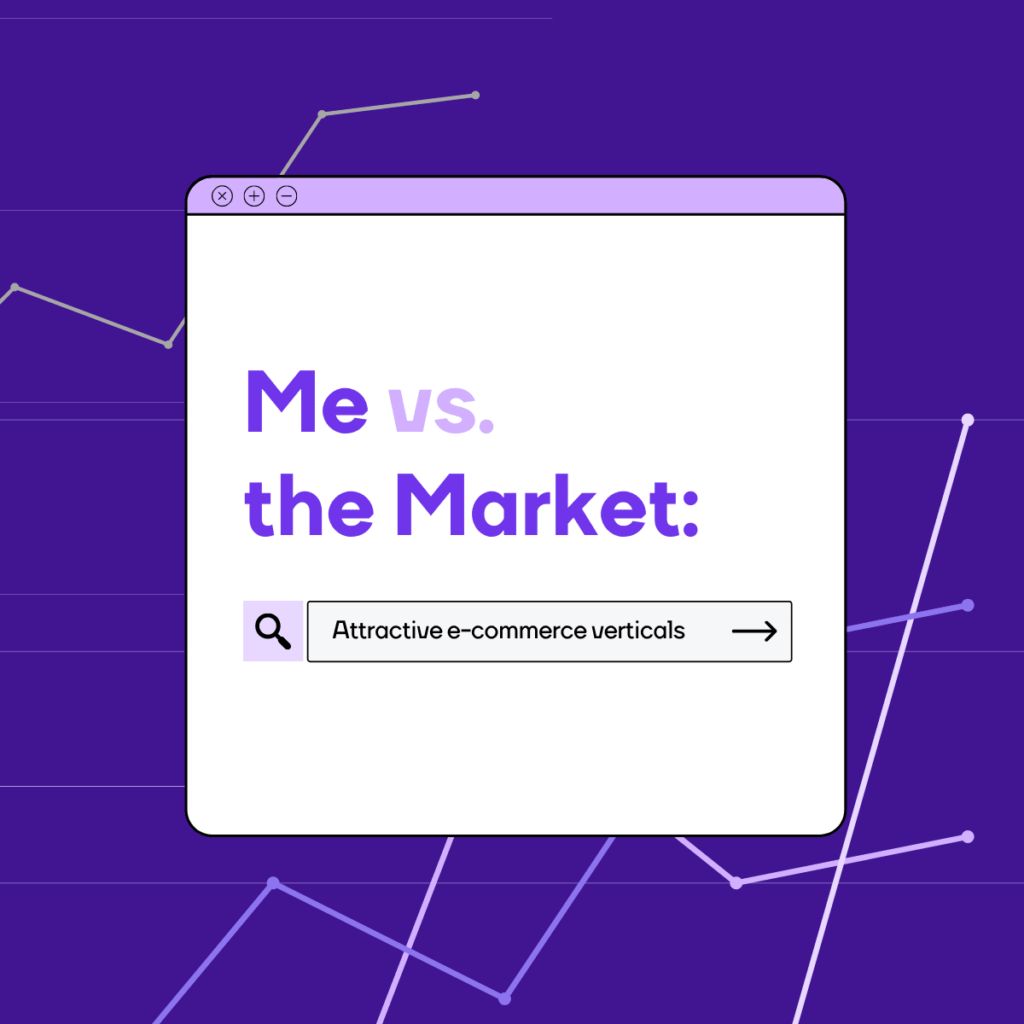Our monthly Me vs. the Market segment pulls data from 1000s of businesses to provide key insights for e-commerce professionals and industry observers looking to benchmark and understand the digital commerce marketplace.
Key definitions:
- Customer Acquisition Cost (CAC): the amount it costs to acquire a new customer.
- Average First Order Value (AFOV): average amount spent on a customer’s first purchase.
- Customer Lifetime Value (CLV): average amount that a customer spends over the first 12 month period.
This analysis will look at the performance of the most common e-commerce verticals over the last 24 months. In reality this is very complex to measure and involves considering gross margin, return rate and customer acquisition costs.
To simplify this matter we will examine how the core purchasing characteristics of each vertical (i.e CLV, AFOV & CAC) intersect and what that says about a vertical’s “attractiveness”. This information may be helpful for CEOs or investors looking to better understand the market.
First Purchase Benchmarks
- High AFOV businesses need profit on every transaction as repeat purchases are less common
First we look at the relationship between AFOV and 12 monthCLV. Verticals such as Sports and Home & Garden need to make a profit on every transaction as their 12 month repeat purchase rate is low. Assuming a gross margin of 50% the high AFOV still allows some wiggle room for shipping costs and marketing costs or customer acquisition costs.
- Low AFOV businesses need high repeat purchase rate
A high 12 month repeat purchase rate is favourable for low AFOV businesses as it reduces the reliance on being profitable from the first purchase.
Verticals such as Pets, Beauty and Food & Drink benefit from higher repeat purchase rates than Fashion, Health & Nutritionand Toys & Hobbies as shown in Figure 1 below.

Change in CAC Benchmarks
Now we take a closer look at the 3 verticals with the highest repeat purchase rate Pets, Beauty and Food & Drink and examine how their cost of acquiring customers has fared over the past 15 months.
We can see from Figure 2 that CAC is getting more expensive across all 3 verticals. This suggests that the dynamics of a good e-commerce model is now more widely understood, resulting in lots of new challengers entering the market and driving up CAC for all.

As seen in the industry
Most founders want businesses that have a repeat purchase nature, hence the popularity of our top 3 verticals.
We see this occurring with businesses such as Beauty Pie, a buyer’s club for high-end beauty and wellness products have just raised an additional £100 million boost. Beauty Pie’s founder Marcia Kilgore has said that its customer retention rates are currently higher than Netflix’s & Spotify’s, and 20x higher than other D2C beauty companies, partly a result of the buyers’ club model.
Another example is Butternut Box, a London-based fresh dog food business with a tech-driven platform that delivers HelloFresh-style, catered dog food.They recently raised an additional £40 million to scale their business. Again, in this example repeat purchase rates are likely to be high due to the brand’s subscription model. Butternut Box competes with the likes of Lily’s Kitchen, Tails.com and Natural Instinct for this lucrative new market.







